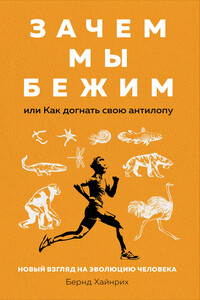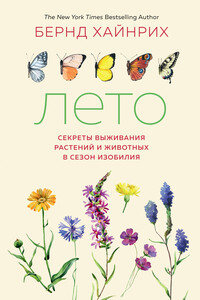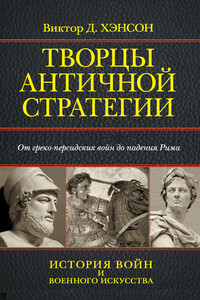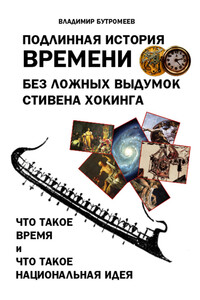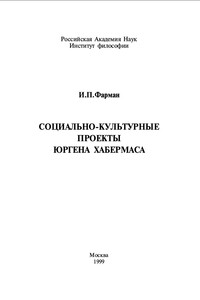// Can. J. Zool. 63. P. 49–54.
_. (1986). Freeze tolerant frogs: Cryoprotectants and tissue metabolism during freeze-thaw cycles // Can. J. Zool. 64. P. 49–56.
_. (1987). Persistence of freeze tolerance in terrestrial hibernating frogs after spring emergence // Copeia. 3. P. 720–726.
_. (1988). Freeze tolerance: constraining forces, adaptive mechanisms // Can. J. Zool. 66. P. 1122–1127.
_. (1990). Frozen and alive. Scientific American. 263. December. P. 92–97.
J. R. Tester and W. J. Breckenridge. (1964). Winter behavior patterns of the Manitoba toad, Bufo hemiophrys, in northwestern Minnesota // Annales Academiae Scientiarum Fennicae. Series A. IV. Biologica. 71(31). P. 424–431.
14. Насекомые: разнообразие и пределы возможного
M. A. Alonso, J. I. Glendinning and L. P. Browers. (1993). The influence of temperature on crawling, shivering, and flying overwintering monarch butterflies in Mexico // S. B. Malcolm and M. P. Zalucki (eds.). Biology and Conservation of the Monarch Butterfly. Science Series No. 38. Los Angeles: Natural History Museum of Los Angeles County. P. 309–314.
E. Asahina. (1969). Frost resistance in insects // Advances in Insect Physiology. 6. P. 1–49.
_ and K. Tanno. (1964). A large amount of trehalose in a frost resistant insect // Nature. 204. P. 1222.
J. G. Baust, R. Grandee, G. Condon and R. E. Morissey. (1979). The diversity of overwintering strategies utilized by separate populations of gall insects // Physiol. Zool. 52. P. 572–580.
_ and R. R. Rojas. (1985). Review – Insect cold hardiness: Facts and fancy // J. Insect Physiol. 31. P. 755–759.
J. M. Diamond. (1989). Cryobiology: Resurrection of frozen animals // Nature. 339. P. 509–510.
Today a frozen dog, tomorrow the iceman // Discover. 1987. 8. June. P. 9.
J. Duman and K. Howarth. (1983). The role of hemolymph proteins in the cold tolerance of insects // Ann. Rev. Physiol. 45. P. 261–270.
B. Heinrich. (1987). Thermoregulation by winter-flying endetheric moths // J. Exp. Biol. 127. P. 313–332.
_ and T. P. Mommsen. (1985). Flight of winter moths near 0 °C // Science. 228. P. 177–179.
H. E. Hinton. (1960). A fly larva that tolerates dehydration and temperatures of minus 270 °C to +102 °C // Nature. 188. P. 333–337.
W. J. Holland. (1968). The Moth Book. New York: Dover Publications.
K. L. Howarth and J. G. Duman. (1984). Yearly variations in overwintering mechanisms of the coldhardy beetle, Denroides canadensis // Physiol. Zool. 57(1). P. 40–45.
O. Kukal. (1988). Caterpillars on ice // Natural History 97. January: 36–40.
_, B. Heinrich and J. Duman. (1988). Behavioral thermoregulation in the freeze-tolerant Arctic caterpillar, Gynaephora groenlandica // J. Exp. Biol. 138. P. 181–193.
J. P. Leader. (1962). Tolerance to freezing of hydrated and partially hydrated larvae of Polypedilum (Chironomidae). // J. Insect Physiol. 8. P. 155–163.
R. E. Lee, Jr. (1989). Insect cold-hardiness: To freeze or not to freeze // Bioscience. 39(5). P. 308–313.
_. and D. L. Denlingers (eds.). (1991). Insects at Low Temperature. New York: Chapman and Hall.
A. Mansingh and B. N. Smallman. (1972). Variation in polyhydric alcohol in relation to diapause and coldhardiness in the larva of Isia isabella // J. Insect Physiol. 18. P. 1565–1576.
P. Mazur. (1984). Freezing of living cells: mechanisms and implications // Amer. J. Physiol. 247. P. C125–C142.
L. K. Miller. (1969). Freezing tolerance in an adult insect // Science. 166. P. 105–106.
M. T. Myers. (1985). A southward return migration of Painted Lady butterflies, Vanessa cardui, over southern Alberta in the fall of 1983, and biometeorological aspects of their outbreaks into North America and Europe // Canadian Field-Naturalist. 99. P. 147–155.
R. W. Salt. (1959). Survival of frozen fat body cells in an insect // Nature. 184. P. 1426.
_. (1961). Principles of insect cold hardiness // Ann. Rev. Entomol. 6. P. 58–74.
W. D. Schmid. (1982). Survival of frogs in low temperature // Science. 215. P. 697–698.
K. B. Storey and J. M. Storey. (1983). Biochemistry of freeze tolerance in terrestrial insects // Trends in Biochemical Sciences. 8(7). P. 242–245.
